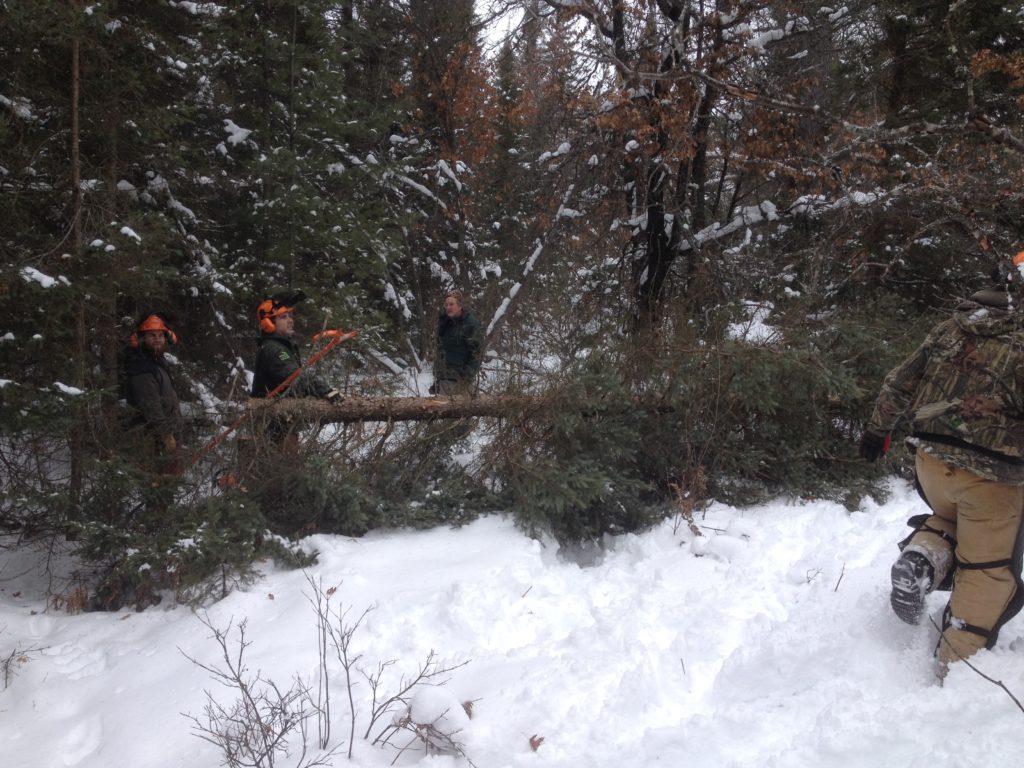
VOLUNTEERS GIVE HARE-CUTS IN THE GRAYLING STATE FOREST
For the third consecutive year, MUCC’s volunteer-based wildlife habitat program has coordinated with DNR Wildlife Biologist Brian Piccolo and DNR Wildlife Technician Tim Riley to improve snowshoe hare habitat in the Grayling State Forest. Last weekend, volunteers hinge-cut trees to provide cover in gap areas of lowland conifer type forest. Eight volunteers from various locations from just 15 to 150 miles joined us to complete this habitat improvement project. This year we were joined by Dr. Gary Roloff of Michigan State University’s Department of Fisheries & Wildlife, the lead for the snowshoe hare population study.

Three of the volunteers were from Pine River High School’s Natural Resources class looking to gain experience in the field with habitat work. Opportunities such as this are very important to help build your resume and make direct connections to pursue a career in natural resources. I’m glad that high school programs are also helping to prepare students for field work as well. Nick Shimel, Tyler Tackett, and Spencer Fisher all took this opportunity and got to have some great conversations with the area’s biologists and fellow volunteers from different backgrounds!

Outdoor writer Bob Gwizdz and cameraman Dave Kenyon of the Michigan DNR also joined us in the field to capture the habitat project. I’m glad that I get to experience these habitat projects with the volunteers and work alongside them. Partnering with the DNR and various groups, high school conservation clubs, Boy Scout troops, corporate groups, along with hunters, anglers, and trappers alike is what makes these projects possible. On Saturday, February 20thwe’ll be clearing an opening for a wildlife food plot in the Gratiot-Saginaw State Game Area with the Midland-Dow High School Conservation club; see details and RSVP here!


